On most of my trips to Le Perche over the past year and a half, I had all the time in the world. Now I had a three-month deadline to move out of my Paris house, and the post-COVID rush for Paris-convenient country homes was sucking up most of the available housing stock. It was right after Christmas and I was desperate to love the place I was coming out to see.
The approach to the village, which I’m going to call Saint-Maxime, boded well. I was searching for a bucolic thirst trap, and arriving via a departmental road that passed through the bursting green forest of Réno Valdieu, it looked to me like I just might get one. That road wound down into a fertile little valley, which even in misty winter was touched by every imaginable shade of green. From there I turned onto a smaller lane lined with shaggy hedgerows as high as houses and eventually made my way down into the village center. I rolled down the windows and took a long, deep breath. My Paris-damaged lungs knew it was a go before anything else in me did.
Once I cleared the hedgerows, I rolled into civilization, albeit one that appeared to be a bit frozen in amber. I later learned that at its most populous phase in the late 19th century, les maximiens ran in the low two thousands. In the ensuing 150 years, small landholders and mill workers left in waves to seek a better life in the cities. There were 174 people living full time here when I showed up hoping to become the 175th.
To my right, just before the big rectangular sign announcing the village border, there was a massive farmhouse complex plastered in fading rose pink. Its contiguous structures were arranged in a series of steps, with several chimneys, as if it might have belonged to a particularly tasteful polygamist with a lot of sisterwives to lodge. It was followed by a stone-walled cemetery. As I continued to wind down towards the center, the road took a hairpin turn onto a prim-looking manor house under a brass street lantern that might have dated back to the late 18th century: it was two stories tall with a high-pitched slate roof, covered in vines all up and down the façade. Passing that, a few brick-trimmed, whitewashed cottages later, the tiny road finally opened up onto the center of the village.
It was little more than a crossroads, but it was expansive and full of light, even on a winter’s day, dominated on one side by a poky little medieval church whose pale ochre plasterwork was fading at the edges to reveal monumental, rough-hewn bricks. Other than the fat brown tabby cat who patrolled the area around it, the tall, hexagonal steeple was the only thing imposing about the church, tiled in weathered, matte-black slate that tapered to a sharp point looming above the fields and houses below. It looked to have been erected in the 13th century, although its stained-plexiglass windows had a touch of the 1980s, a phase in French public works that shared some DNA with the former Soviet Union. You can’t have everything but this was almost everything.
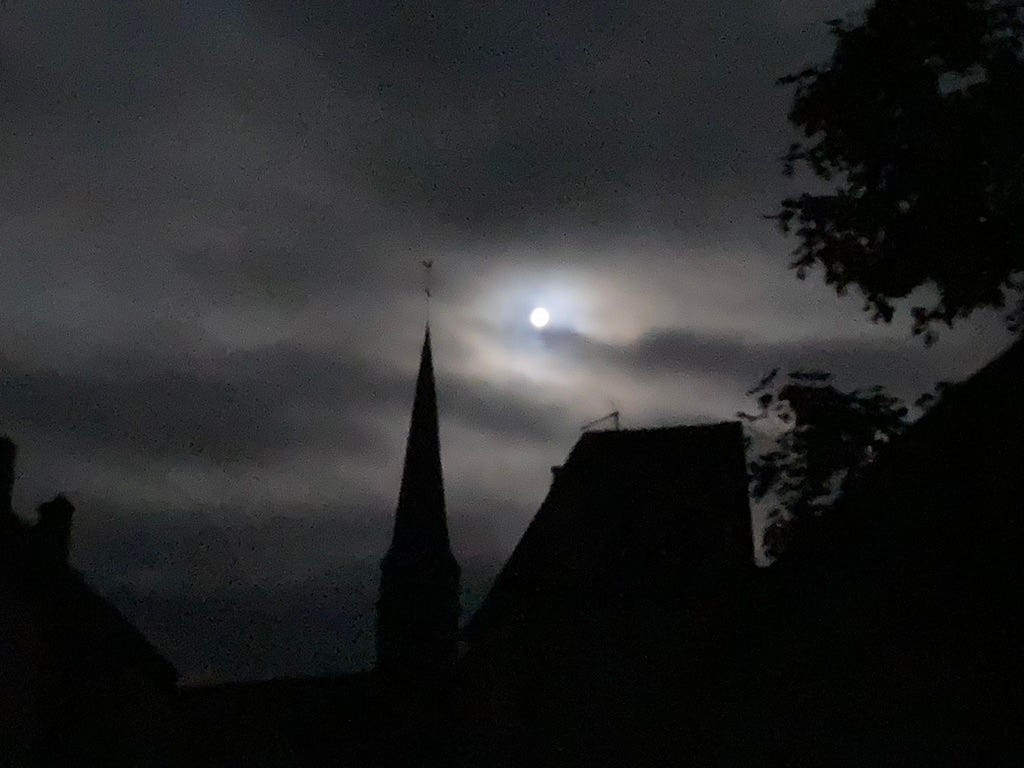
Around me was a mix of stone farmhouses with backyards trailing off onto the valley behind on both sides, and a complex of smaller, less-landed cottages across from the church arranged in a small square covered in blacktop. There were no bakeries, no post offices, no cafés, no people. Across a tiny street from that complex, giving onto the main entry to the church, was the house I was coming to see. It was indeed just like Camilla’s picture: plastered in a taupe color and dominated across its wide façade by massive double-windows framed in white, symmetrically, upstairs and down. It had a bougie pomposity that could have worked as a crime scene involving a B-character in Midsomer Murder. I’d later learn that it was originally a schoolhouse for boys and imagined that the sight of the church through every window kept their hijinks in line. “Only God can judge me,” I thought as I first spied it. Not exactly, I’d come to learn.
The real estate agent, let’s call her Camilla, was waiting for me by the church, and before we knocked on the front door, she took me on a quick detour to see the small backyard. It was overgrown with weeds and strewn with a rusted swing set and abandoned toys: plastic Big Wheels and model cars and more deflated soccer balls than I could count on one hand. “This is kind of off-putting for potential buyers,” she told me. I assured her I didn’t need something turnkey, but it was a blight. In the middle of the backyard was a creepy looking shed that was the half left standing of a larger cement-block house that had burned down a decade ago. The Germans never bombed this far from the beaches in Normandy but there was a blitz vibe about it. I reminded myself that the asking price was just below market value, which, at the time, was one-tenth per square meter of what my ex and I had just been offered for our house in Paris. This meant I’d have some leftover money to fix everything if I didn’t go crazy.
As we approached the front door, an oak antique that had weathered to the point of shredding, I noticed a piece of white cardboard in the window with the words “Maison à Vendre” scratched in shaky ballpoint pen, despite this village not having a whole lot of pass-through. (Like, none, which is a good thing since the façade of the house opens right onto the main road.) When the author of the sign opened the door, he looked to be in his late 30s, short, unshaven, with heavily tweezed eyebrows in a sort of French Jersey Shore style. He was cheerful and polite on the surface, with a shy smile, but the way his eyes darted around the living room, strewn with piles of folded laundry of all sizes, he was clearly a bit overwhelmed.
From the minute I stepped inside the house, I knew it would be mine. I never had such confidence about things if they depended on other people. Something could always go wrong, someone could always not show up, or they could pick someone else. A natural pessimist, I had trained myself to think in the conditional. Here, I just knew.
The volumes were uncommonly airy compared to the low-slung cottages and farmhouses I had seen so far. Of course it was going to need work. The floors on the ground level were covered in grey-toned synthetic wood, and the walls that weren’t crumbling exposed stone were lined in raw timber to cover the electrical cables that modern living requires. It had a simple layout, essentially a big rectangular box. No gnomish warrens to jerry-rig into better-flowing spaces, no need to paint the overhead beams white to give the illusion of more height. Monsieur showed us into the kitchen, on the north end of the box, and offered Camilla and me small plastic cups of espresso. The sink was full of dirty dishes and his hands trembled when he handed over the coffee. I assumed it was a hangover and silently sympathized.

The kitchen was spacious, with two big windows, one looking out onto the church on one side, the other offering a direct view of that cluster of smaller houses. It had fantastic light, but it was dominated by an unworking fireplace taking up half the free space which Monsieur proclaimed proudly he’d built himself. Bare light bulbs hung on wires, and upstairs, the bedrooms had been oddly partitioned to make room for four young boys and what was clearly once a couple.
Though it presently felt like a monument to someone else’s despair—I knew how that went—it was a good place to uproot torpor and create something new. The original layout of the rooms upstairs would be easy to restore, and they all had multiple windows. There was an attic all the way up top that Monsieur had started to build floorboards into, hoping to move up there with his soon-to-be-ex in what were once happier times. He assured me the heating system was in working order. Something in me had doubts but I was starting to fall in love and those were just details.
I started doing mental calculations. If I continued his plan to build out the attic and added another bathroom up there for myself, it would end up being bigger than my house in Paris, and all for me and the friends and family I would hope to stuff in there for long weekends and holidays. My ex was, himself, about to close on an apartment a few metro stops away from our old place that was a slightly larger version of the tiny duplex loft he lived in when we first met. I loved the symbolism of that. Someone was treading water and someone else was evolving, she hoped—reinventing herself into something brave and epic and wise.
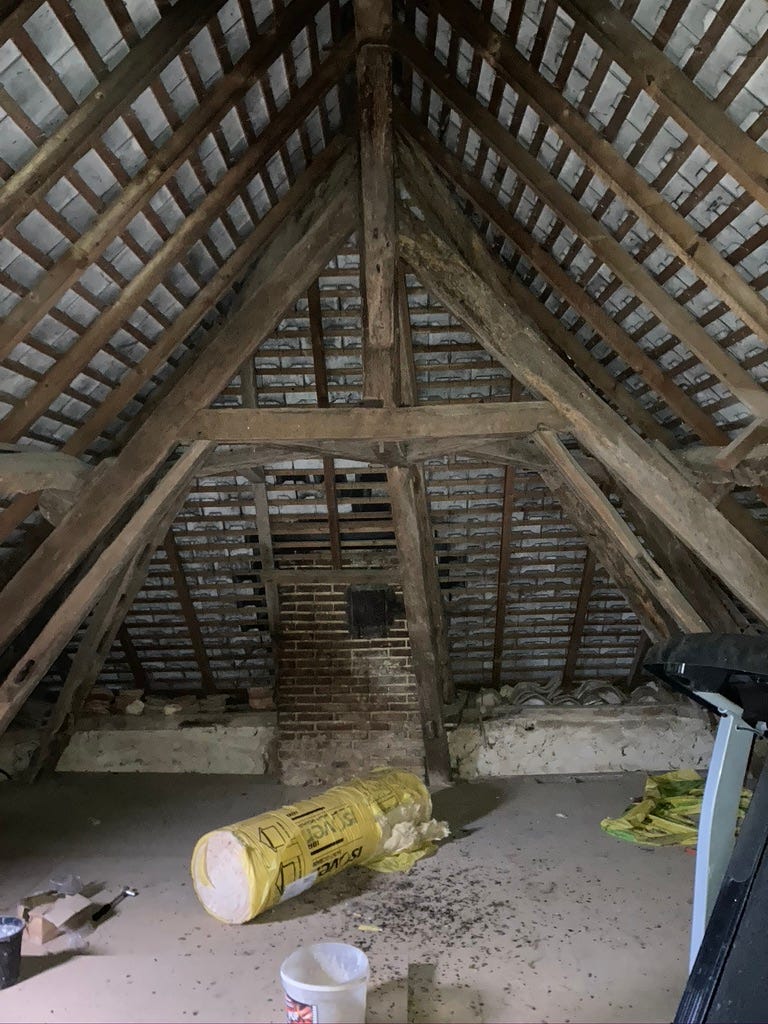
I knew nobody else who lived in Saint-Maxime, or anywhere really closed by, but Operation Thirst Trap clearly had a future here. I told Monsieur by the end of the visit that I was going to make him an offer contingent on his having the diagnostic work done, which would attest that the electricity was up to code, and that there were no termites, asbestos or lead. The diagnostic had been a sticking point with Madame. Camilla told me neither of them wanted to front the money to get it done. These two hated each other even more than I hated my ex at our absolute, most violent rock bottom. I felt for them but had a strange respect for that resolve.
After shaking hands with Camilla and Monsieur, I drove straight back to Paris and snuck back into the house to avoid having to make conversation with the ex. We were getting along, but I wasn’t trying to pop up into his room to sit on the foot of the guest bed, braid his hair and share my news. At night, in bed with my laptop resting in the same spot he used to, I’d go on Google Earth and take virtual visits of the village. At least in my mind I could be there. I didn’t want to think about the kids or how much I’d miss them. I knew I was important to them in a way that I wondered if I ever would be for anyone else again. Instead I pored over Farrow and Ball fan decks to pick out the colors of the rooms upstairs. Of course my new choices would be better than what we had in Paris. I would see them that way whether it was true or not.
Once the diagnostic came through clean about a week later, I didn’t even go back to visit a second time before I wrote to Camilla offering just under asking. It was accepted with almost no back-and-forth. Given prevailing market conditions, Monsieur could have held out but they were eager to wrap things up. Like us, they needed the money and they needed to move on.
My most heartfelt apologies for having missed my usual Friday posting date yesterday. My brain needed to breathe after a few weeks of deadlines and lots of running around. We’ll get back on track next week, when we’ll return to the furious prep to finally make this move.




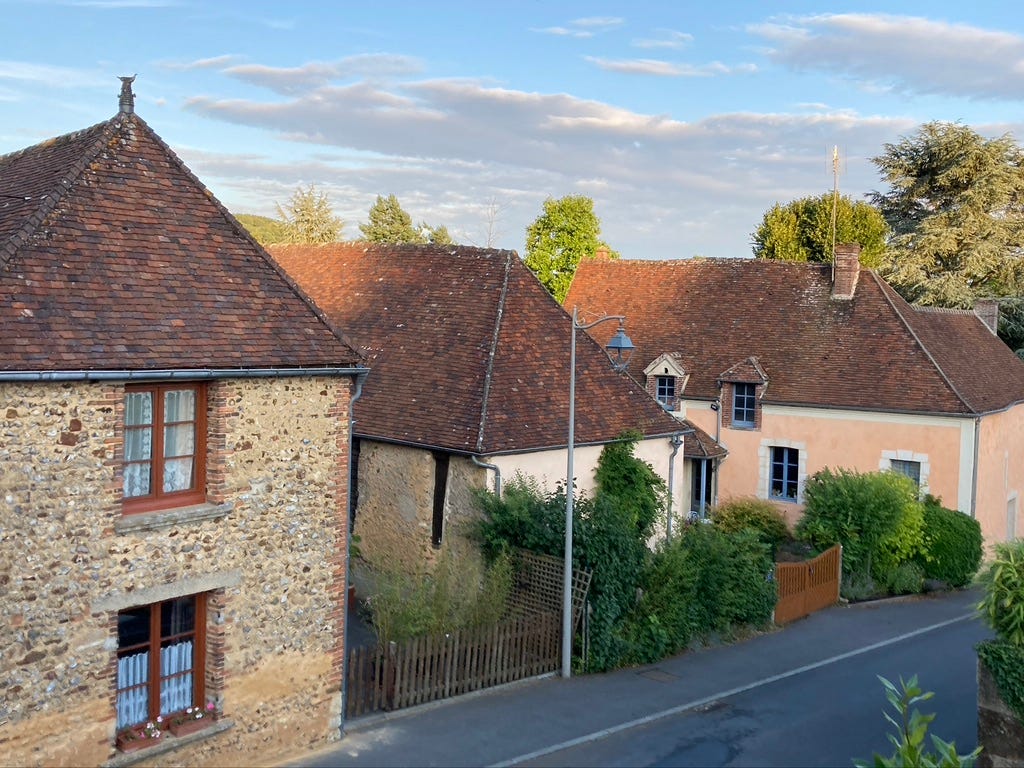
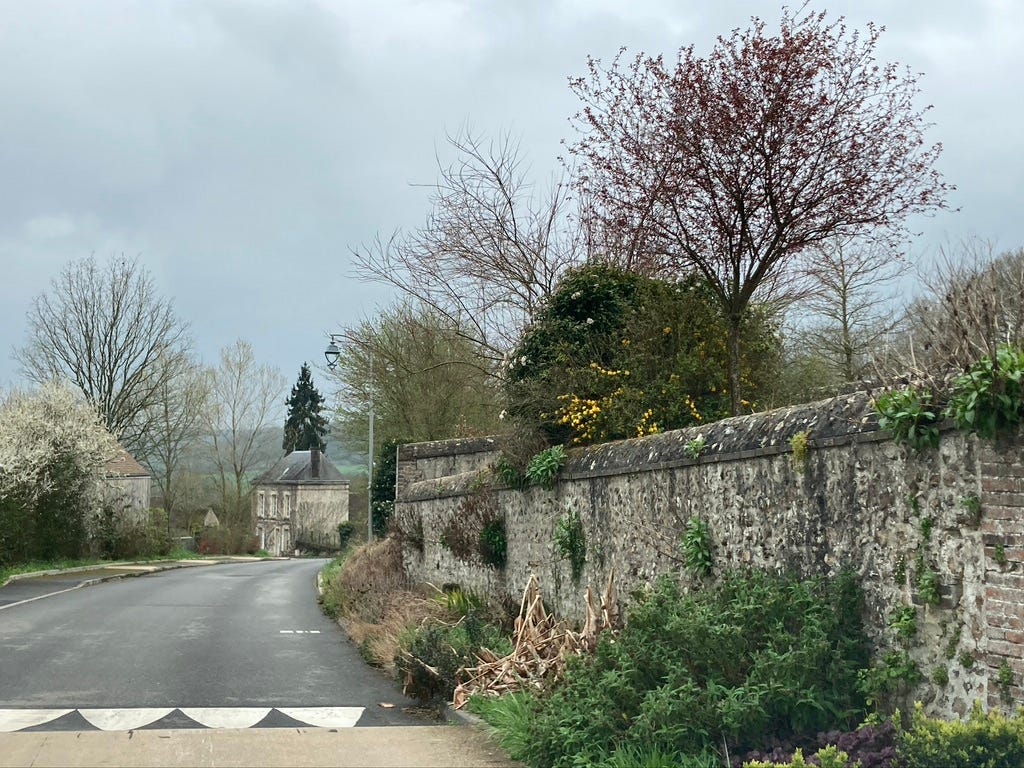
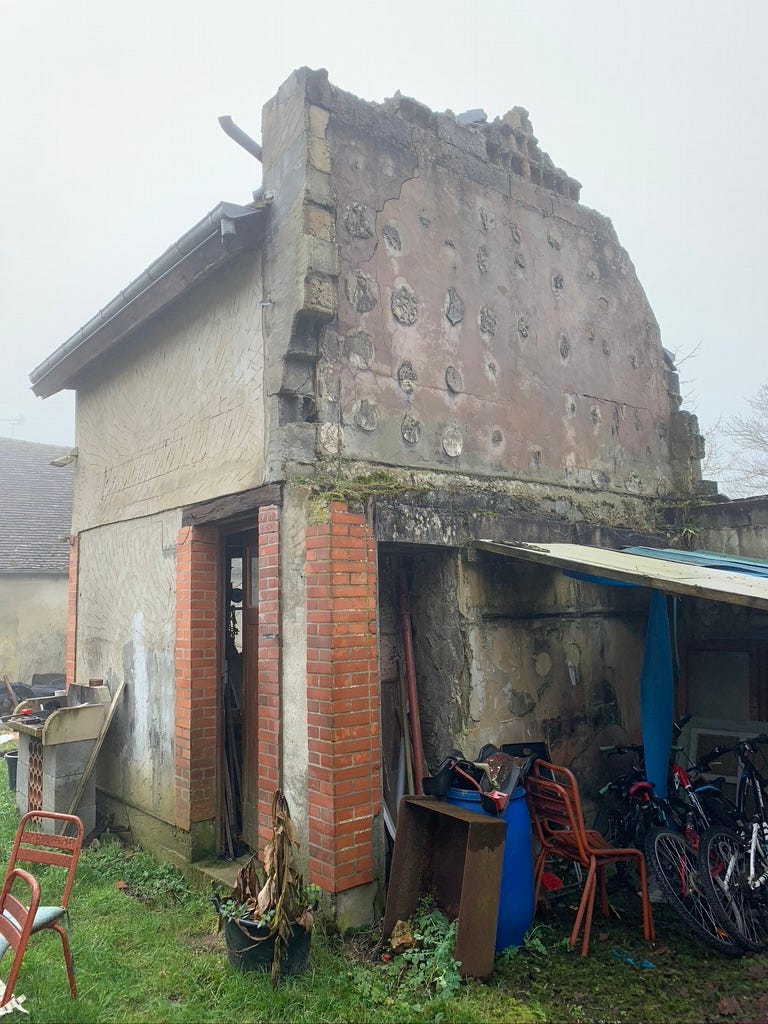
I believe those droppings belong to bats. ;-)
This is so inspiring! I'm about to purchase two homes on one lot in Bretagne, my location of choice. People tell me I'm nuts and that I'll hate winters there and totally have buyers remorse, but it can't be any worse than winters in the northeast US… can it?